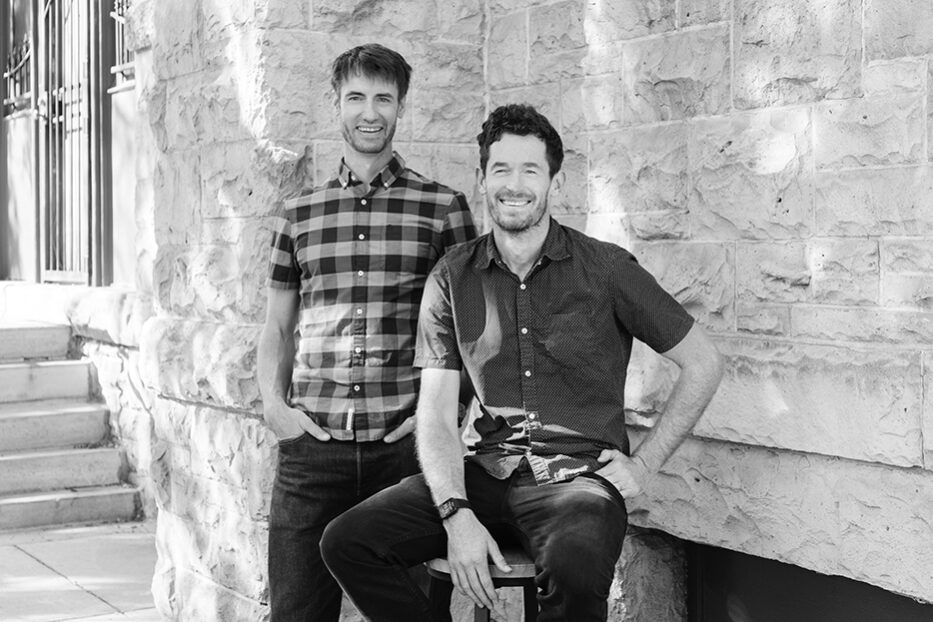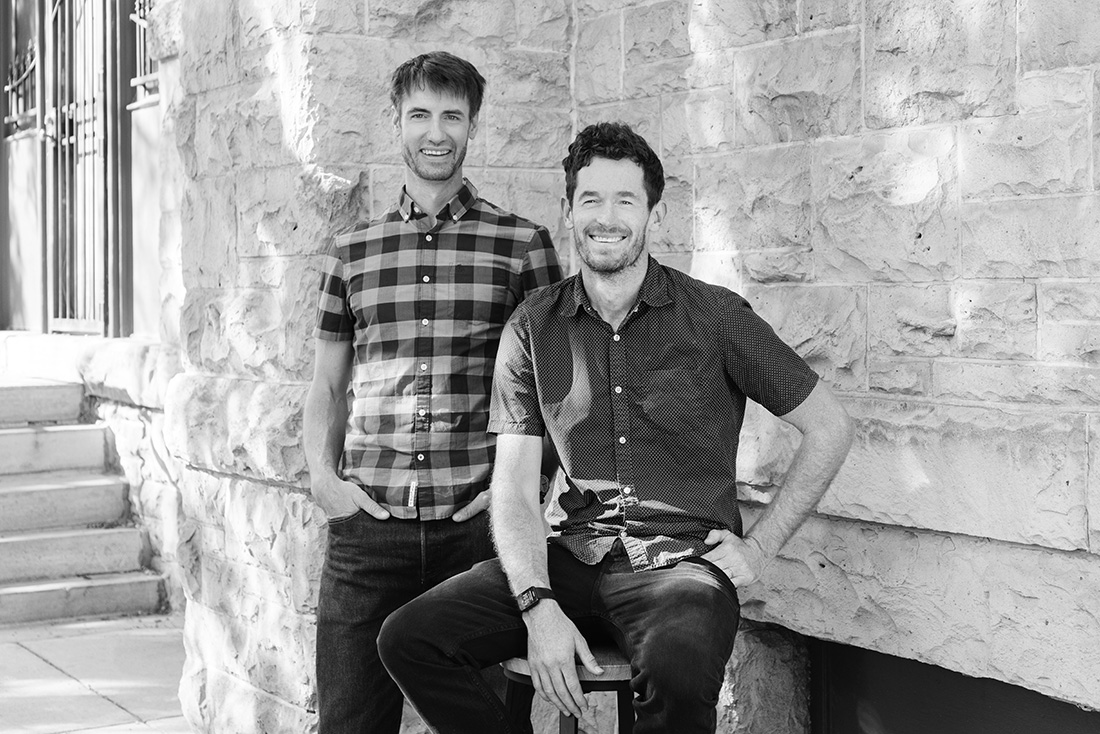
the voice of Shape Architecture
In the realm of architecture, where creativity meets functionality, Steve Scribner and Morgan Law, the co-founders of Shape Architecture have carved a unique niche for themselves. With a profound commitment to sustainability and an innate appreciation for artistry, their work resonates deeply with the ethos of modern design. Deeply rooted in context, Shape Architecture’s approach draws on inspiration from the natural landscape to seamlessly blend with its surroundings. Whether it’s a net-zero community building or a nature center, each project is a testament to their commitment to site-specific, sustainable design.
From conceptualizing designs to refining intricate details, Steve and Morgan’s collaborative approach ensures that every aspect aligns with the artistic vision while serving functional needs. As Passive House-certified designers, the duo shares an aligned vision for a sustainable, inclusive, residential and culturally-oriented practice. Through their unwavering dedication and holistic approach, Shape Architecture continues to shape a future where architecture isn’t just about buildings — it’s about creating spaces that nurture, inspire and endure. Below, we delve into their journey, inspirations and the principles that drive their practice forward.
- How did you find your calling in architecture? How has that initial inspiration evolved in your firm?

- SS: I grew up making things; my dad renovated houses. He was also a big gardener and I spent my childhood in the woods and garden, gaining a deep appreciation for the balance of the natural world. I was also always interested in how the world worked so I majored in physics. I took an architecture course in college to fulfill an arts credit requirement and loved it — I could combine my interest in craft and physics, and positively impact people’s lives.

After graduating, I managed to find a job at an architecture firm in Durango and then moved to Telluride where I got to work on incredible projects on amazing sites with steep terrain and a very challenging climate. But I wanted my work to make a more positive difference and be more truly sustainable than second homes can be, so I went to graduate school at Parsons in NYC. I worked in New York and Boston for large firms on really exciting cultural and educational projects. I missed Colorado and the scale of the small firm, so growing Shape Architecture with Morgan has been the synthesis of all my passions.
ML: I studied art and sociology as an undergraduate. I also liked making things. After watching ‘An Inconvenient Truth’ I realized how inefficient buildings were and felt that pursuing sustainable architecture was a way to help impact climate change in a positive way. That initial inspiration is still the core of the DNA of our firm. We pursue a wide range of sustainable strategies on every project. My definition of sustainability has grown from building performance to fair housing solutions, equitable design processes and community benefits.
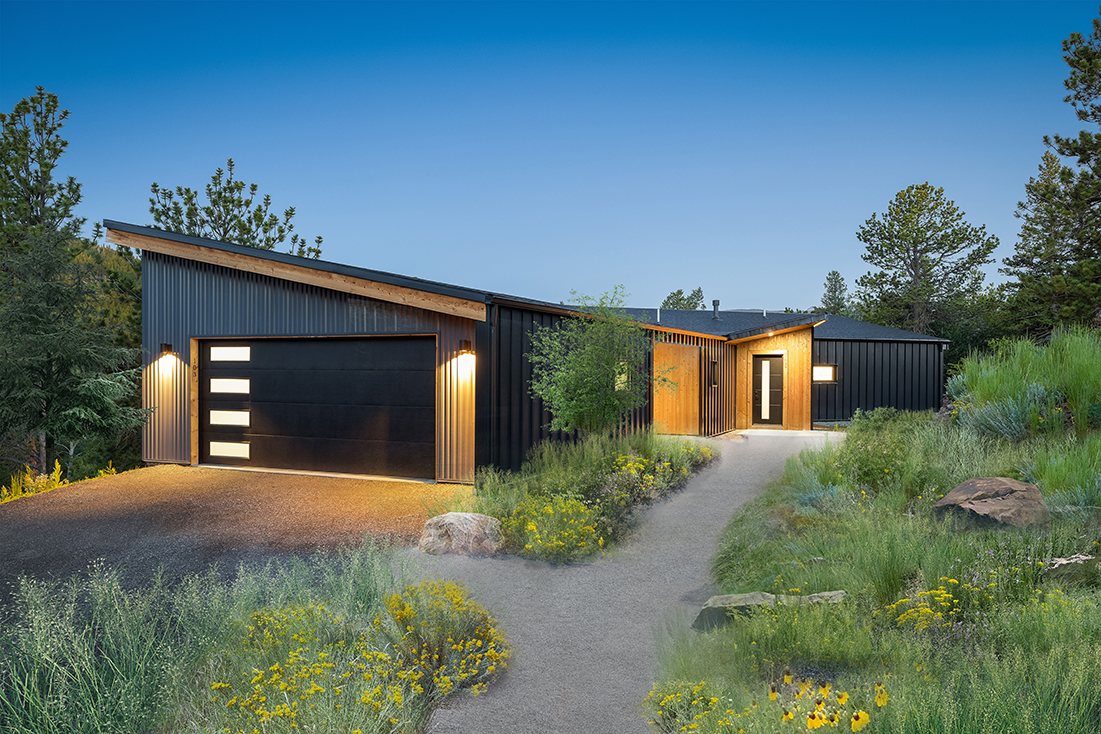
- How does artistry integrate into what you do on a daily basis?

- SS: It’s really fun being in the position Morgan and I are in now, where we both work on projects directly, but also have more of an editing/coaching role. In phases of the design process where there are more details and coordination, we can step back and make sure those micro-decisions are working toward the artistic vision. And of course, when we get to charrette with the team to come up with concepts and layout ideas it’s really fun and rewarding. Working with Morgan, I’ve been able to develop my artistic voice more than ever before.

ML: There’s so much editing that occurs on projects that sometimes it can be difficult to integrate the feeling of artistry. There’s also a lot of potential that comes from this editing process to explore solutions. We identify critical components early on, find unique and exciting ways to celebrate them, and (sometimes) advocate for why those elements are critical to the project.
- How do you describe your signature architectural style?

- SS: I would say ‘style’ is the wrong word here — we want every project to be the ideal response to its particular site and social context. The materiality of the property, topography, vegetation, access, and of course the sun all inform the design. But we do gravitate toward simple, clear architectural forms with fewer add-ons and material changes, simply because more complicated building forms tend to not perform as well or last as long and always cost more to build (and simplicity resonates with our aesthetic preferences)

ML: Most of the ‘style’ of our designs is generated from the site and the client. Materiality is very important to the wide variety of communities and climates we work with in Colorado.
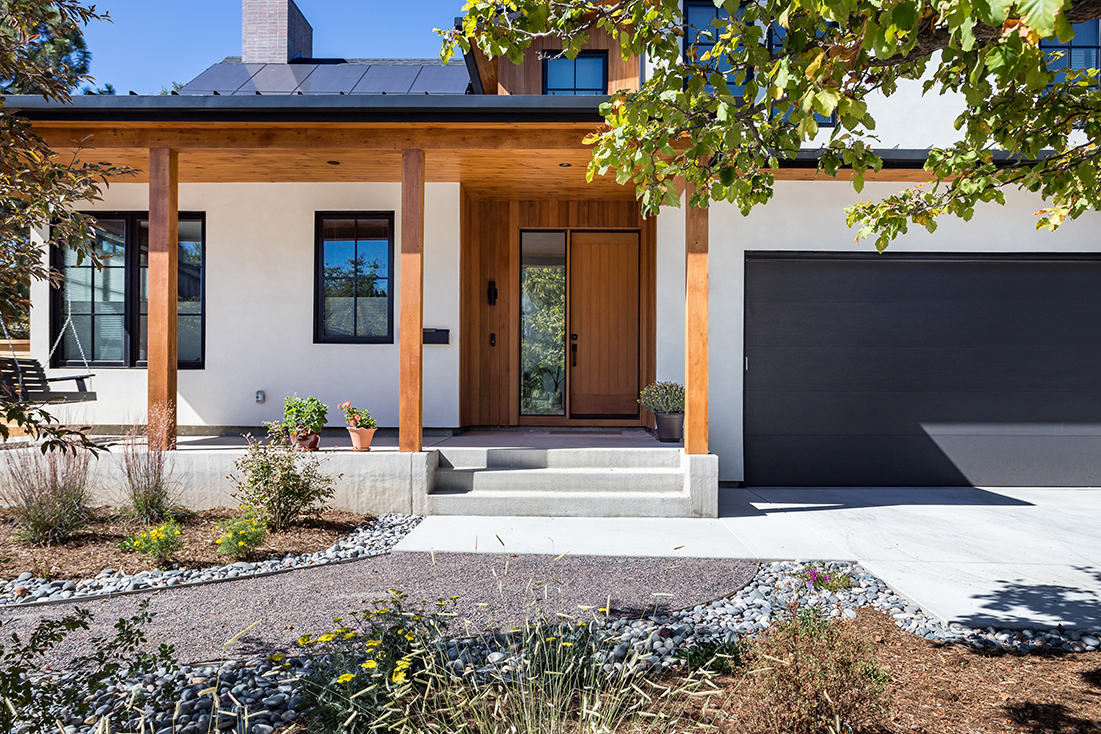
- We architects really have a huge responsibility — we have power to approach building design differently and radically reduce energy consumption.”

- What architectural style or movement resonates with you the most, and how do you infuse elements of it into your work while still maintaining a contemporary edge?

- SS: We are less influenced by specific past genres and take more inspiration from the landscape or urban context than style. But I will say the 180-year-old farmhouse where I grew up in Maine, along with so many other classic New England farmhouses, still influences me a lot. Although we feel that copying historic styles is inauthentic, we always aspire to create work that is as natural in context and practical yet beautiful as those old homes were.

ML: I am always drawn to the architectural heritage of the Pacific Northwest. The site responsiveness, materiality and scale is largely unmatched anywhere in the country. Having lived and worked there, the climate, availability of gorgeous natural materials and proximity to incredible craftspeople provide a wealth of good design. We try to bring this quality to our practice.
- Can you share a specific project that truly resonated with you and explain the influence for its concept and design?

- SS: One that is really exciting to us right now is a net-zero community building we recently finished designing for a new park at the site of a heritage farm in Aurora. The concept of the entire park is around celebrating the past and future of dry-land agriculture in the west — an existing barn and silos are being restored and will be the home of animals such as goats and chickens. Vegetable gardens on-site will be supported by a new three-season seedling greenhouse. The new flexible community building will house a cafe, classroom/event space, outdoor classroom, bathrooms and back-of-house support spaces.

It’s designed with a super long, low-sloping solar canopy — the shed form recalls simple agricultural forms while creating generous outdoor shaded spaces that are seamlessly connected to the indoors and can house all kinds of community events, from classes to farmer’s markets to weddings. So this project really checks all our favorite boxes: net-zero, site-specific, community-oriented and educational. It’s won several awards already and we think it will be a model for other community park spaces.
ML: Bluff Lake Nature Center. The initial brief was for the design of a building, but our approach has been more holistic, prioritizing landscape and considering the entire preserve in the development of the design. We envisioned the building as a gateway to nature, and this really resonated with the clients, so it has felt like a shared vision from day one. This project is in close and equal partnership with Superbloom, the landscape architecture firm, and the synergy of our collaboration has been really rewarding.
- How do you tailor your approach to each project in order to achieve a shared vision with your clients?

- SS: This is such a great question — starting the process by coming together with the clients, (and collaborators including the contractor, landscape architect, energy model consultant, etc.) is the most important step. Once we create a shared vision that we all buy into and can collectively aspire to, the rest of the process comes easily.

ML: I love the variety of clients we get to work with — from single-family homeowners to builders, developers, non-profits and more. It may sound trite, but listening closely to the client and the site is crucial and has served us well on single-family projects; this approach doesn’t change drastically for current, larger projects.
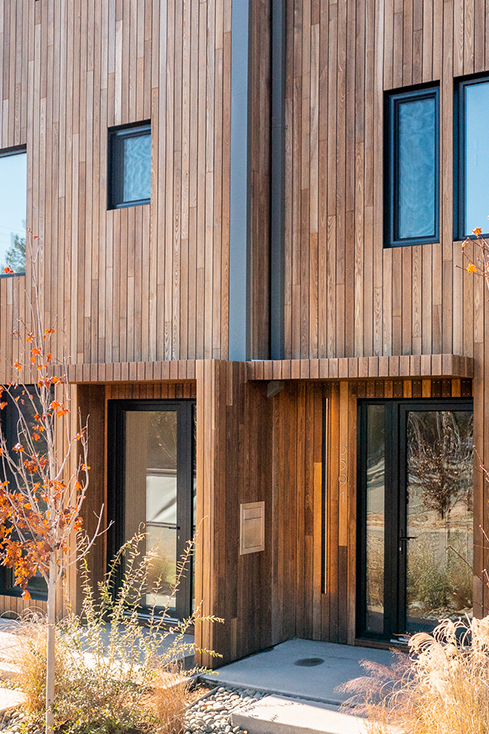
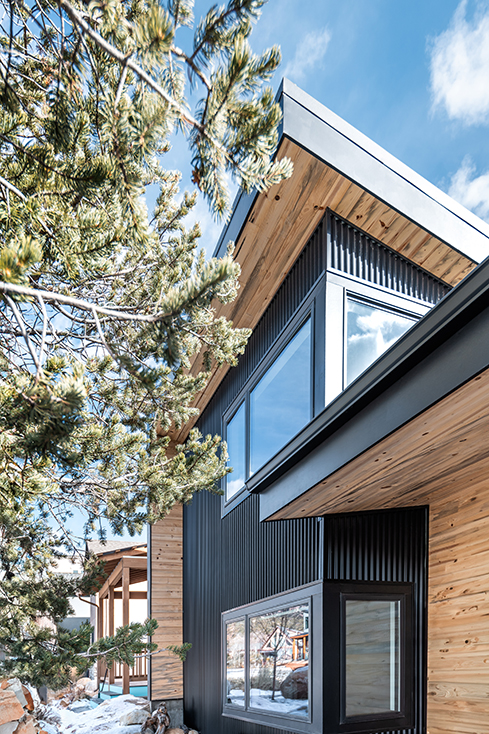
- Sustainability and environmental responsibility are crucial in modern architecture. How does this movement align with creating eco-conscious designs at Shape?

- SS: Yes, we architects really have a huge responsibility — we have the power to approach building design differently and radically reduce energy consumption. Heating and cooling energy accounts for a massive fraction of the human-caused climate change, and basic building science provides solutions that not only reduce energy demands, but increase health, comfort and durability. This is actually why Shape exists — both Morgan and I are Passive House-certified designers. For those that don’t know, Passive House is a voluntary standard that leads to heating/cooling energy reductions of 75% compared to typical construction, as well as eliminating mold concerns and dramatically increasing indoor air quality and thermal comfort.

When Morgan moved to the front range in 2015, he couldn’t find another company that understood and implemented the building science underlying the standard, and also did work that inspired him. So he first started a design-build company with a friend, but then started Shape in order to shift the balance of his work back to architecture. When I moved here in 2018, I joined Morgan for the same reasons and because our visions for a sustainable, inclusive, residential and culturally-oriented practice were so aligned. Now, although we don’t exclusively work on Passive House certified projects, we bring our building science expertise to every single project we do.
ML: This responsibility is completely interwoven into Shape’s DNA. We have worked with almost every green building standard and a wide variety of building types. We employ a lot of this shared knowledge on almost all of our projects that are not Passive House Certified. Having said that, we also appreciate balance. We recognize that a 1,700-square-foot passive solar code building made of wood has a lot less embodied energy than a 5,000-square-foot concrete certified passive house. We also work with a lot of folks that have real, fixed budgets. We are always looking at how we can achieve health, comfort and energy efficiency by starting with the “low hanging fruit” for every project.
- To what or to whom do you attribute your success?

- SS: 1. We’re extremely grateful for the opportunities we’ve had. Because we recognize this, we work hard to make every project as successful as we possibly can — from design conceptualization to execution.

2. We nurture the relationships we have built and in return, we’ve been fortunate to get a lot of our work through referrals and repeated partnerships (especially contractors).
3. We are probably in the right place at the right time — because we have a really clear focus on high-performance, low-energy design at a time when the importance of building low-energy is starting to be recognized more and more; and net-zero or passive house goals are getting more common, so people are finding us. It’s a big goal of ours to complete ultra high-performing buildings that are cost-competitive and resonate stylistically with a wide audience, to help people realize their sustainability goals are not only achievable but will improve their quality of life.
ML: Steve and my partnership and our complementary skills and aligned vision has been critical to our success as a firm. Our similar interests combined with different ways of doing things continues to be a collaborative and fulfilling partnership. We have also spent years in the trenches, slowly proving ourselves and building up our own network but also contributing to the Colorado green building and design communities. There’s not a lot of ego or top-down ethos in our office. We genuinely like collaborating and play well with others, which goes a long way.
- Where do you find inspiration in your daily life? Do you have any recommended books, podcasts or publications?

- SS: I’m constantly inspired by the silliness and inquisitiveness of my kids — it certainly helps keep me on my toes and always seeing things in new ways. They are great trainers for thinking outside the box. I also find inspiration and rejuvenation from being out in nature, whether back-country skiing, hiking or walks with the family.

ML: I enjoy the Architecting podcast and reading books. I live in Leadville and drive down to Denver once a week. There’s about 30 minutes over Fremont Pass with no service and that’s my time to breathe. I’m also an avid outdoor person and do some of my best design thinking while biking, skiing or running in the hills right outside of Leadville.
Discover more about Shape Architecture by visiting their website or following along on Instagram.
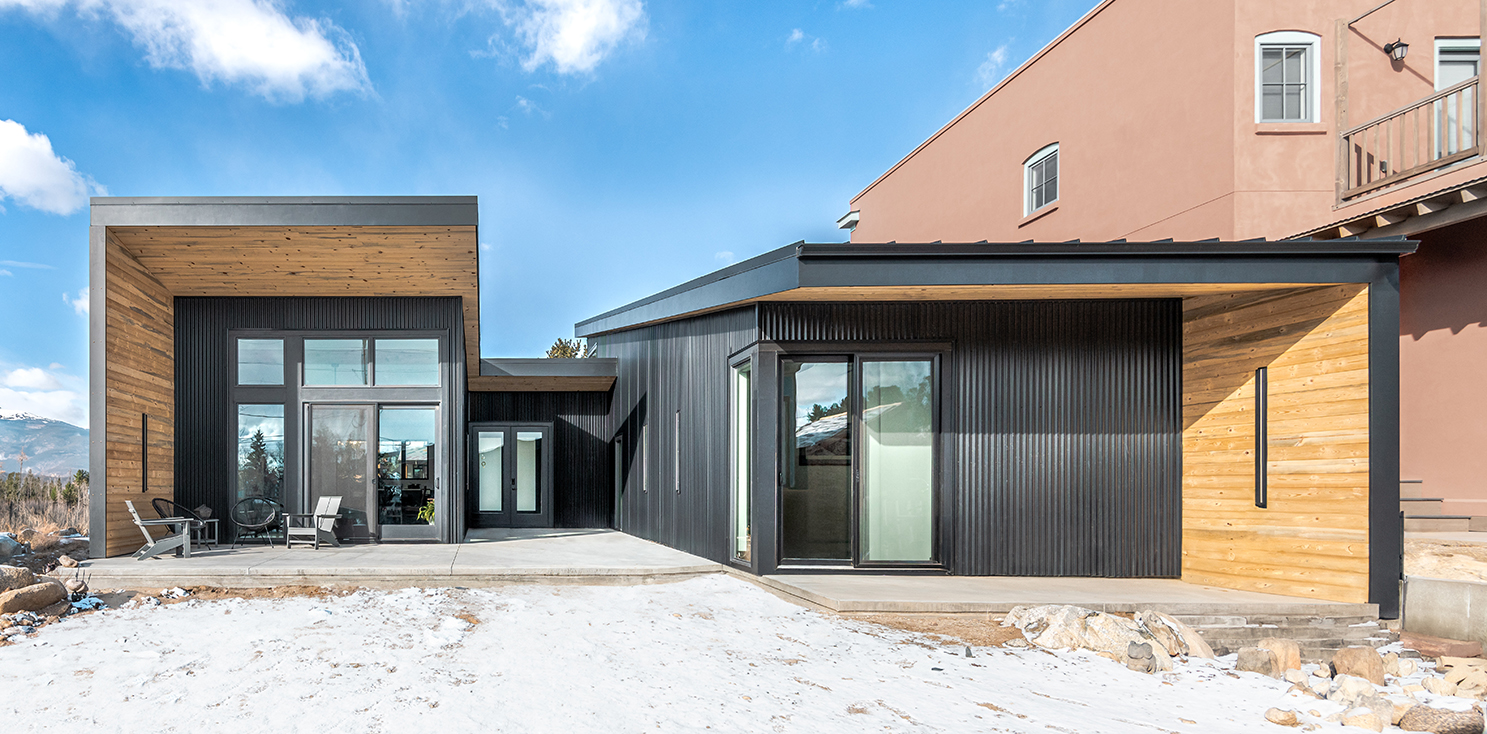
SUBSCRIBE
to stay in the know
Your dose of the coolest properties, seductive architecture, influential design, art that matters and community happenings.

